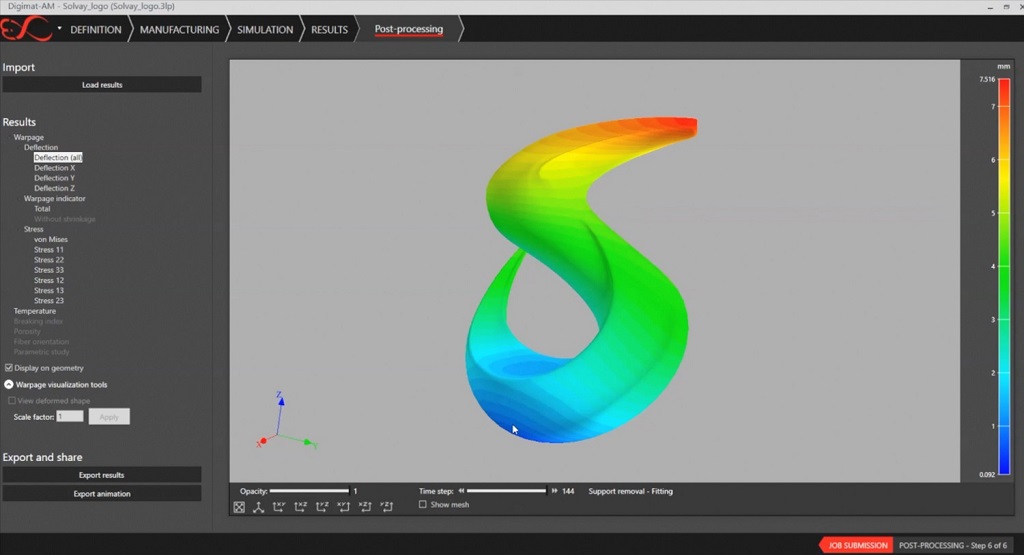![Solvay’s logo as seen in Digimat-AM software [Image: Solvay]](https://fabbaloo.com/wp-content/uploads/2020/05/Digimat-AM_SolvaylogoforPR_img_5eb09da908084.jpg)
Understanding high-performance polymers in 3D printing is crucial.
Solvay’s Christophe Schramm, the Additive Manufacturing Business Manager in the Specialty Polymers business unit, told us at formnext to “stay tuned” for more to come. Just two months later, we see some of what we’ve been looking out for with the next step in the company’s plans to continue advancing high-performance polymer 3D printing.
“Our growing range of AM filaments underscores Solvay’s determination to establish itself as an industry leader in this rapidly evolving market. Digimat-AM allows customers to simulate the printing process and successfully predict the thermomechanical behaviour of 3D-printed designs in order to ‘print right the first time’,” Schramm says in Solvay’s latest announcement.
Simulation is on the rise in additive manufacturing, as advanced software can digitally replicate the conditions of and predict the specific performance of the 3D printing environment. Increasing attention is now being paid to the exact materials profiles in use, as thoroughly understanding these chemistries provides more metrics in gauging performance.
The latest release of Digimat-Additive Manufacturing (Digimat-AM) software from e-Xstream engineering, 2019.0, features additional high-performance materials from Solvay.
Adding to Solvay’s KetaSpire PEEK AM filament, which is already available for simulation, Digimat-AM now also includes 10% carbon fiber filled KetaSpire PEEK and neat Radel PPSU.
“With the addition of Solvay’s new AM grades, we now have a wider portfolio of 3D printing grades in Digimat to provide cutting-edge new materials to push the design and application boundaries in this dynamic market. As a result of our partnership, we bridge the gap in simulation engineering between high-performance polymers and demanding printing processes such as Fused Filament Fabrication,” Roger Assaker, CEO of e-Xstream engineering and Chief Material Strategist for MSC Software, said.
Digimat-AM offers simulation solutions for FFF and SLS 3D printing. eXstream engineering explains that the software can:
-
Simulate the FFF and SLS processes of reinforced materials
-
Predict the as-printed part warpage, residual stresses and process-induced microstructure
-
Analyze the coupled thermal-structural response of the process for unfilled and reinforced polymers
-
Set up the right manufacturing parameters for high precision printing and further bridge the gap between printing process, material and part performances.
The predictive modeling data for high-performance materials allows designers to predict and hopefully prevent deformation, warping, or failure before a print job begins. With the growing focus on engineering-grade polymers for high-strength 3D printing, a reasonable amount of confidence in right-first-time print jobs helps designers, engineers, and operators justify the costs of more industrial materials and the equipment to run them. The interplay between materials and printing process parameters can help simulation software predict the stiffness, strength, and general performance of printed parts.
When I spoke with Schramm in November, he noted that Solvay would be continuing to increase focus on partnerships and response to market demand. The expansion of simulation solutions for more high-performance materials certainly fits into that road map and sets 2019 up for additional growth. We’ll continue to “stay tuned.”
Via Solvay and e-Xstream engineering

